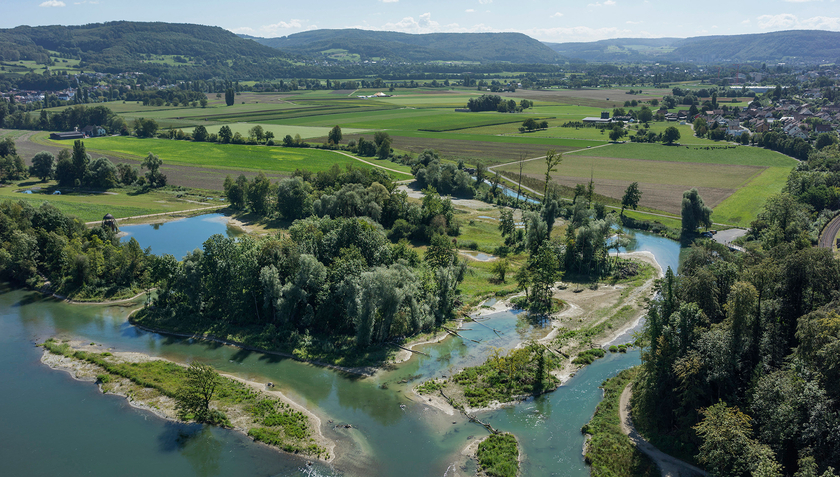Chapter 2: Water and land – closely interlinked

The interrelationships between aquatic and terrestrial habitats extend far beyond the riverbank and floodplain areas. For example, birds feed on winged aquatic insects, and the leaves of deciduous trees provide food for aquatic amphipods. These interactions influence the stability, resilience and functioning of entire ecosystems. When conserving and managing habitats, it is essential to take these interactions into account.
Content
(in German and French only)
- Blue-green habitats
- Box 1: Ink strokes - blue-green habitat on the rock
- Box 2: Beavers are master builders of blue-green habitats
- Blue-green systems
- Box 3: Water bodies enrich the diet of birds
- Box 4: Leaves feed streams
- The landscape is blue-green
Key messages
> Aquatic and terrestrial habitats are closely connected such that changes in one habitat impacts the other potentially altering food webs and material flows.
> Blue and green habitats should be both be considered in a process-oriented manner – regardless of whether this involves sustainable use or measures to conserve and revitalise habitats.
Contacts
Co-Leaders of the research initiative
 | Prof. Dr. Florian Altermatt Tel. +41 58 765 5592 Send Mail |
 | Prof. Dr. Catherine Graham Tel. +41 44 739 2361 Send Mail |
Scientific Coordinator
 | Dr. Morgane Brosse Tel. +41 58 765 5798 Send Mail |
